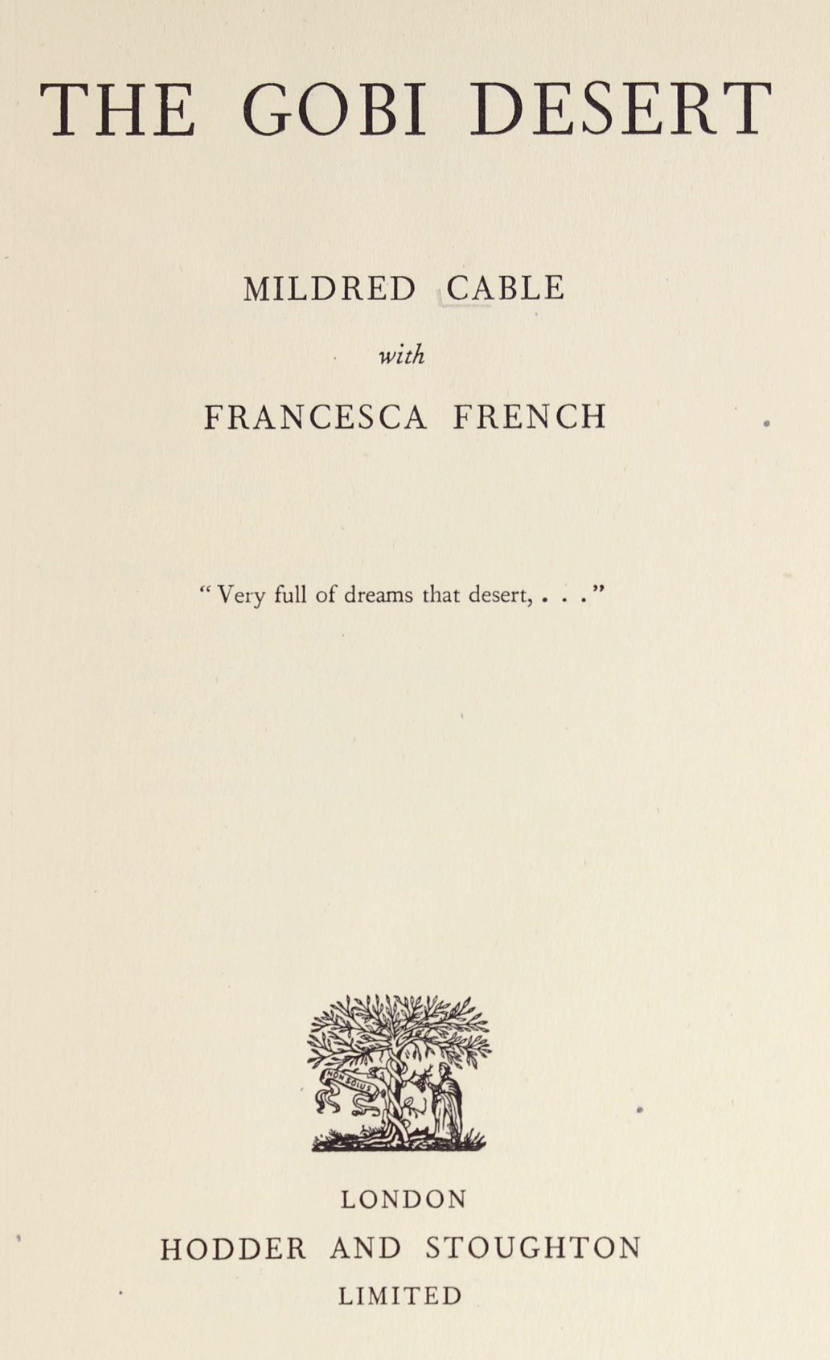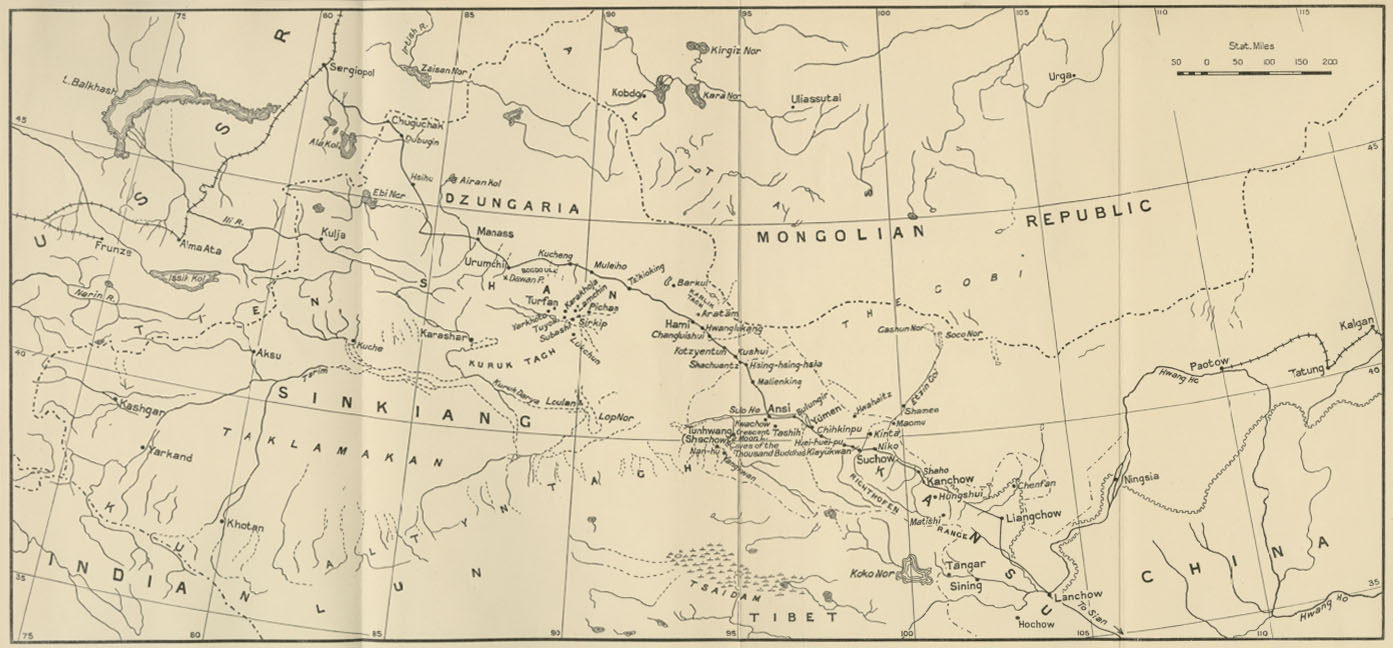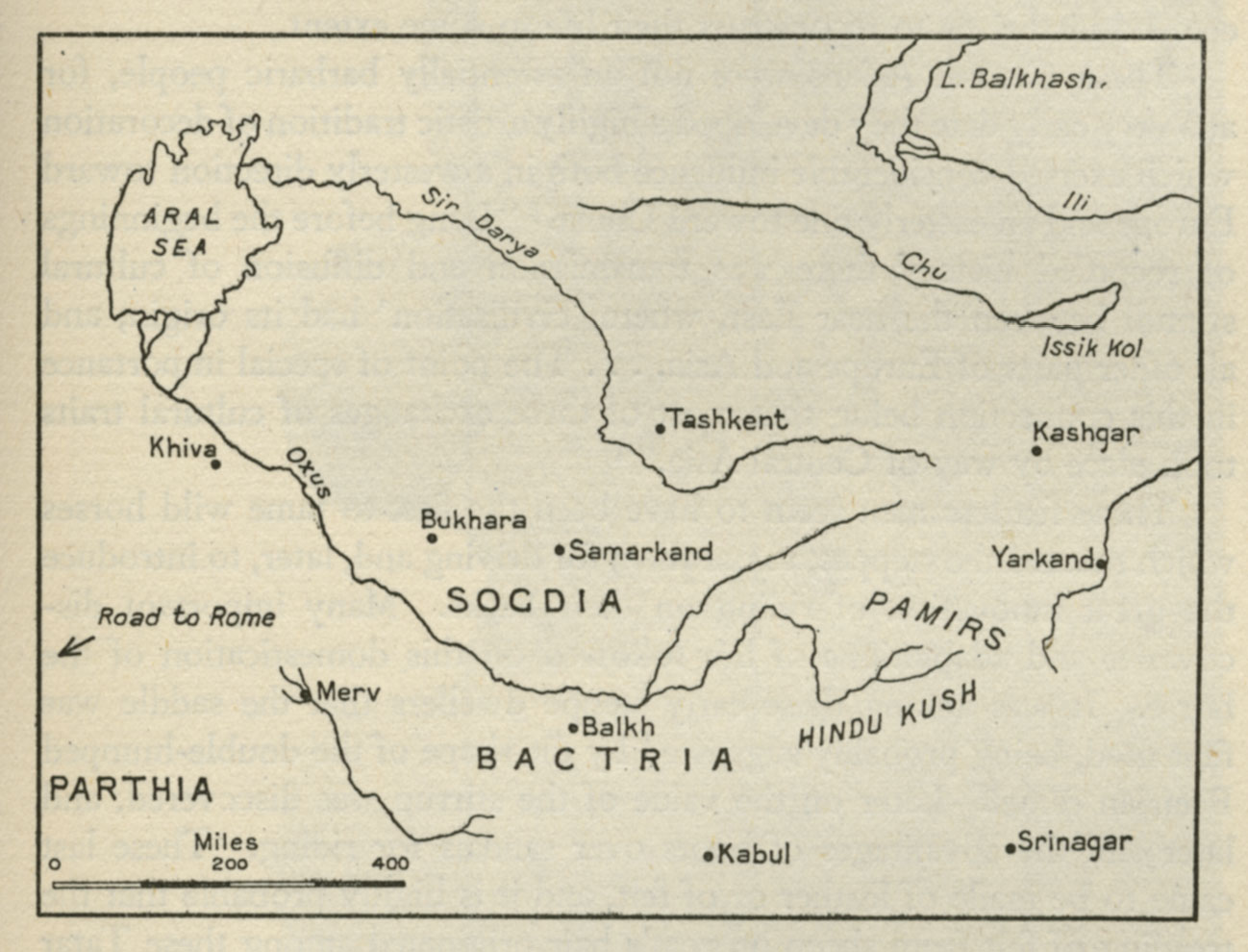The Gobi Desert
Mildred Cable & Francesca French
Summary
The Gobi Desert unravels in Turkestan and the Gobi Desert. Three itinerant female missionaries wrote this book carrying both the characteristics of a historical account and a travelogue. Although the latter genre dominates the structure of the book, historical accounts of past and contemporary events interrupt the most extensive travel narrative. Through Sochan, Tunhwang, Ainsi, the Gobi Desert and the numerous pass ways that constitute its borders, the authors recount a variety of historical events going as far back as the Greoco-Buddhist eras, the Silk Road of the Roman Empire. Much later events such as the conversion of the region’s populations to Islam, but also major political events which the group witnessed and even participated in, are reported. Among these are a series of anthropological descriptions and analyses as well as exhaustive accounts of major political events in the region, such as the Muslim uprising of Eastern Turkestan, or the Sovietization of Turkestan. Many comments on spirituality and beliefs of the region are given.
.
Detailed accounts
After 20 years of mission in the province of Shansi Mildred Cable, who appears to be the principal author of this book, leaves for a one-year nomadic mission. Accompanied by the French sisters, Eva and Francesca, a caravan full of books, medicine, and other materials, she makes her way across the Great Wall of China. After a series of stops and events, the caravan and its group end their mission by returning inside the borders of China’s Great Wall.
Passing the towns of Socha, Kiyayukwon, Gold Washer’s halt, Hsing-Hsing-hsi, Chihkin, and Matishi, the authors mostly offer descriptions of what they see and observe. The ground, the air, the sky, a few interactions are presented in detail.
The accounts of Ta-hsi and its surroundings focus on the Caves of the 1000 Buddhas. The authors recount the history of religions in this part of the world, the perception of monks responsible of faraway Buddhist temples.
In what follows thereafter, a series of oasis and towns are presented in a rather plain style. In an architectural and ethnological mindset, the settlings of Hsüan Tsang, Tunhwang, and Ainsi, are described. The ways and techniques of traveling in the desert are also well explained.
After page 100, the authors explicitly start an anthropological account of their trip where innkeepers, desert peoples, languages and tribes, are described and differentiated.
With a short insight into the life of the King of the Gobi, the khan’s life, his extended powers, and his fall are accounted for.
Then, preceded by another description of the Greaco-Buddhist traditions of the region, political events dominate a part of the narrative. The book depicts the Russian and Chinese relations through a series of anecdotes. Finally, the book gives an extensive description of the Muslims revolt of 1930 in Turkestan.
The book ends on both an anthropological and spiritual note about the goods and bads of the desert.
.
Comments
The photographs contained in this book have a certain value. Among other things, there is a picture of the money used in Turkestan in the late 19th early 20th centuries. The narrative accompanying the photos provides the reader with a context sufficient enough for him to understand and interpret the photos. To the pleasure of the art historian, the book offers many artistic descriptions. The characterizations of the environment allow for a phenomenology of nature. The first hundred pages of the book contain many descriptions of the use of resources. In fact, the book challenges the idea of a united nation in Eastern Turkestan, as each oasis of the Gobi desert is stated to have its own regional chauvinism.
.
Jean-Philippe Bombay, student of History and Islamic Studies at McGill University, Quebec




















































